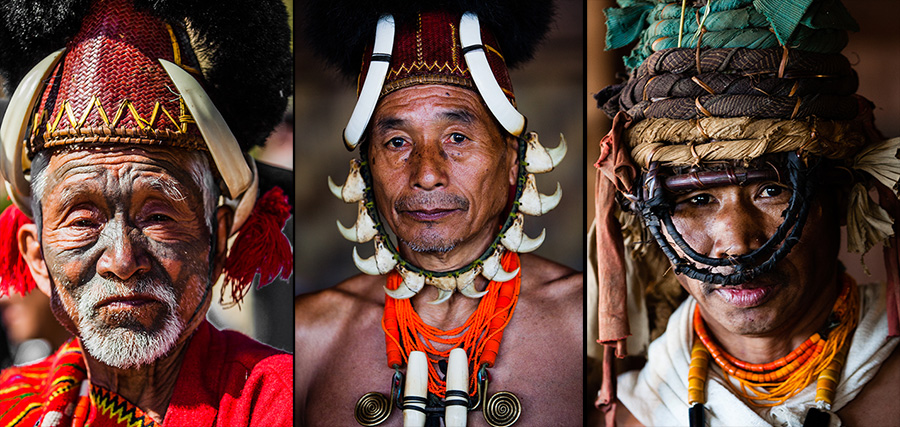
On a cold December morning, every road in Nagaland seems to be leading to the Hornbill Festival venue. Large signboards, usually adorned with portraits of Naga people clad in their beautiful best traditional wears, welcome you to the ‘Festival of Festivals’. They are compellingly beautiful images – seeing one of them in a newspaper or a magazine will compel you to pack the bags and catch the next flight available.
The Hornbill Festival is a celebration of Nagaland’s traditions and cultural heritage. Sixteen communities–collectively called Nagas–come together at the festival venue to exhibit their wears, enact their daily life and re-create their energetic festivals at one place. Imagine spend a year travelling through rural Nagaland, witnessing their way of life and celebrations, and then think about bringing it all together in one-go. That’s hornbill festival for you.
Here is a collection of images from Hornbill Festival – celebrations, performances and portraitures, made in the last two years of leading photography tours to the festival.

The festival venue–called Kisama Heritage Village–just outside Kohima. The venue is far larger than just an amphitheater for performances. Surrounding the amphitheater are the resting places of the participating communities, restaurants, shops, museums and community areas.

Also see: my photography tour to Myanmar.
It was a pleasant October evening, but an unusual moment when I arrived in Mandalay. Our boat docked after a long journey upstream on Ayeyarwady, throwing us immediately into chaos that we weren’t prepared for. The road from jetty to the city was clogged with people in a celebratory mood. Loud speakers–giant black boxes decked on mini-trucks–blared loud and shrieking music on a road filled with revelers dancing wildly. Chaos, crowds and cacophony had conquered the road in a way I had never seen anywhere during my journeys across Myanmar.

Sunset hour at U-Bein Bridge, Amarapura, Mandalay.
In the last leg of our week-long trip in Myanmar that had taken us through the depths of a spiritual, graceful and congenial country, we had suddenly landed into an unexpected contrast. It was the last day of Durga Puja, and much of the Indian-descents in the city had gathered by the riverside for a procession and idol immersion. We got off the car, which we had barely boarded after alighting the boat that had ferried us from Bagan, and walked into the gathered crowd. Cameras strapped around our neck, we stood out as tourists in the completely-local crowd, and caught the attention of a few revelers in no time.
 This month’s issue of Mondo Arc magazine features some of my work from Dev Diwali Festival in Varanasi. See the story here, or scroll down for the unedited question and answers. Most of these images are made during my annual photography tour to Varanasi, which we conduct in November.
This month’s issue of Mondo Arc magazine features some of my work from Dev Diwali Festival in Varanasi. See the story here, or scroll down for the unedited question and answers. Most of these images are made during my annual photography tour to Varanasi, which we conduct in November.
Q: Tell me about the experience of creating the images in Varanasi…how did you chose the subject.
Varanasi has an unseen depth to it, rarely understood by its visitors. During the day, it’s a busy mix of pious pilgrims hoping to earn merit in the other world, businesses that depend on them and tourists who are looking to witness all this. As the night falls, the dimly lit alleys grow quiet and everyone congregates at an explosion of lights at Dasaswamedh Ghat, where the evening ritual of Ganga Aarti is performed by priest swaying torches under floodlit steps leading to the river.
Behind all this is a belief that moves the city and an energy that holds its constructs together. My motive has always been to capture this belief and energy that serves as the city’s foundation. I attempt go behind the faces and their interactions, trying to catch an unseen flow of otherworldly forces that appear define the city’s way of life. The people, the lights and the rituals form manifestations of this internal energy through which I try to represent the ethereal mystery of the city.




